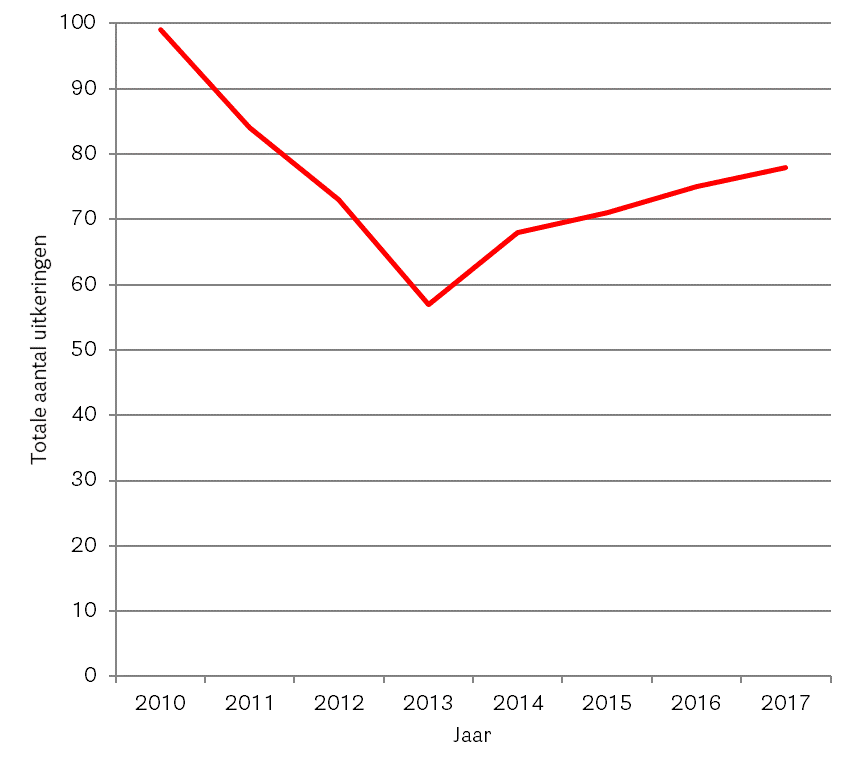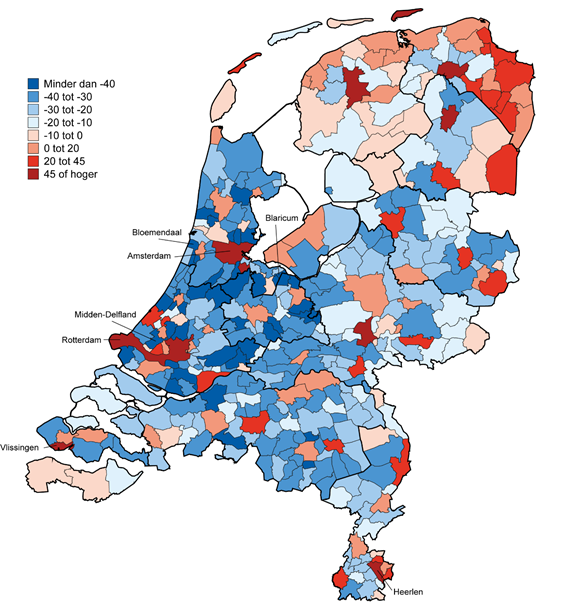Bloemendaal receives €953 per resident and Heerlen €3,465
Central government allocates municipalities an average of €1,947 per resident to perform their tasks. But some municipalities receive much more than others. Heerlen receives the most: €3,468. Vlissingen and Rotterdam also receive generous amounts. At the other end of the scale are Bloemendaal, Midden-Delfland and Blaricum, which receive under €1,000 per resident. This is apparent from the new Atlas of central government grants to municipalities 2017, published today by the University of Groningen’s Centre for Research on Local Government Economics (COELO).
The weak social structure and regional importance of Heerlen, Vlissingen and Rotterdam drive up the costs. In addition, houses are relatively cheap so property tax raises little revenue. This accounts for the high grants from central government. Larger municipalities and municipalities in the Northern Netherlands receive relatively large grants from central government (see map below). The government expects the more prosperous municipalities such as Bloemendaal, Midden-Delfland and Blaricum to have lower costs and be able to generate more revenue from local taxes.
It is not easy for citizens to find out how much money central government allocates to their municipality. The website www.coelo.nl has compiled a comprehensive overview.
Dozens of central government grants paid to municipalities
On average, municipalities only cover around 17 percent of their costs from local levies. Central government foots the better part of the bill, at around 60 percent. Municipalities receive €34 billion via 78 different grants from central government. Over €6 billion is allocated via 16 specific grants (earmarked for specific costs) and €28 billion via the Municipalities Fund (to be spent at the municipality's discretion). The general funding (€15 billion) and the grant for the social domain (€10 billion) are the largest central government grants.
Number of central government grants to municipalities rising again
In addition to the two major grants, another 60 smaller grants are allocated through the Municipalities Fund, sometimes to just a single municipality. Over a period of years, the total number of different grants dropped from several hundred to 57 in 2013. Municipalities did not receive less money, they just got it through fewer different channels. This was more straightforward and generated less red tape. Strangely enough, the number of grants has risen again since then, to 78 in 2017 (see graph), despite central government’s ongoing pledge for more simplicity and transparency.

Reading example: Amsterdam and Rotterdam receive more than 45% more per resident from central government than the national average. The amounts per municipality are given on coelo.nl

Meer informatie
- More information: University of Groningen, Prof. Maarten Allers, Professor of Economics of sub-national government, tel. +31 (0)50 363 3745, e-mail coelo rug.nl .
- Publication: L.A. Toolsema and M.A. Allers, ‘Atlas rijksuitkeringen aan gemeenten 2017’. COELO, Groningen, 2018.
More news
-
23 October 2025
Nine UG researchers awarded Vidi grant
-
21 October 2025
'You can’t blame the citizens'
